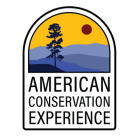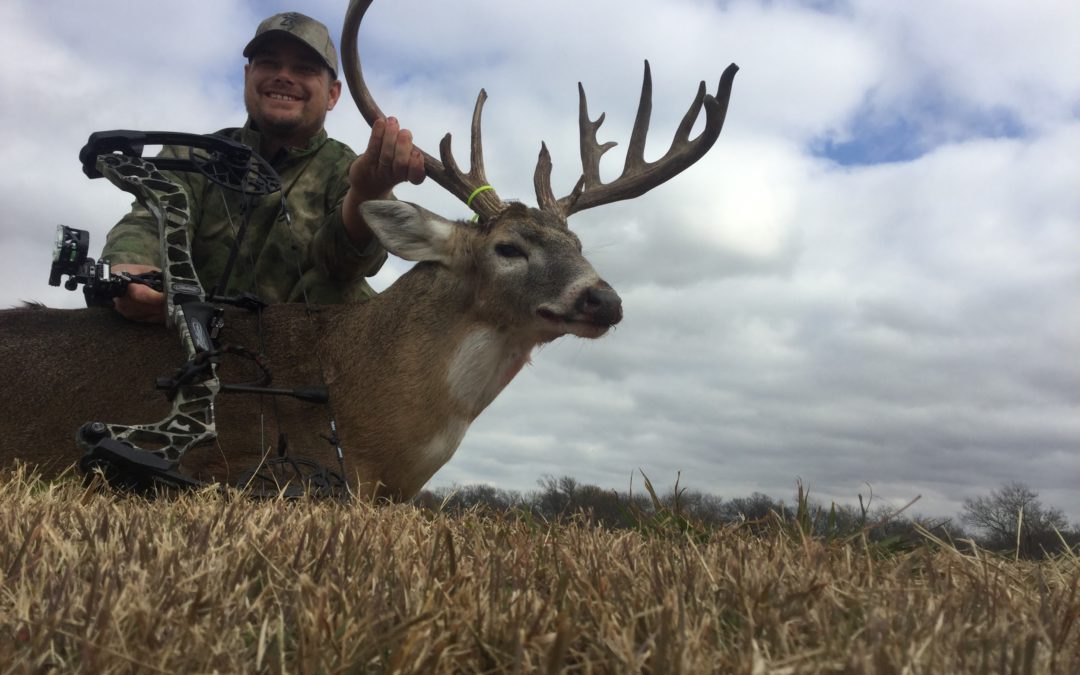Lessons from the Hunt
By: Kylie Campbell and James Puckett
We have spent the past two months following snow geese along the Central Flyway and surveying hunters of all types. This leg of our journey provided us with fodder for many introspective moments. Our previous perspectives about hunting were changed for the better and we discovered a new passion to pursue in the future. Read on to learn along with us as we travel from the Midwest, south to Texas, and back again!
Loess Bluffs NWR
On our way west towards Loess Bluffs NWR we kept our eyes peeled for eagles soaring through the sky, knowing that we were about to reach the winter home of one of the largest bald eagle concentrations in the country. Once we reached the refuge in Missouri, we learned that there was a lot going on in addition to the eagles! We first met with the refuge manager, Lindsey Landowski, and she explained that fall migration was in full swing and waterfowl was plentiful across the refuge. Snow geese, Canadian geese, pelicans, swans, mallards, and other ducks were a few of the species that we observed. Towards the end of our time at Loess Bluffs NWR we got to see thousands of snow geese land in the pools to rest every day. These charismatic birds would remain a common sight and sound for this leg of our journey!

A visitor enjoys birdwatching on a boardwalk at Loess Bluffs NWR. November 2018. Photo by Kylie Campbell.
Lindsey also helped us pronounce the name of the refuge, which was originally known as Squaw Creek NWR. The name was changed to Loess Bluffs National Wildlife Refuge on January 11, 2017, in order to remove the derogatory word “squaw” from the name. Ironically, the creek that flows through the northern end of the refuge is still named Squaw Creek, but the southern side flowing out of the refuge is named Davis Creek.
Overlooking the refuge from the east, the loess bluffs habitat is a unique geological formation of fine silt deposited by wind. The sandy soil of the bluffs erodes easily which makes it interesting considering how long the formations have been there! These unique hills stretch from about 30 miles south of St. Joseph, Missouri, to extreme northern Iowa. Loess, pronounced “luss,” soils support Missouri’s native prairie plants such as Indian grass, big bluestem, blazing star, yucca, beard-tongue, and skeleton plant. On the refuge, however, large trees were planted by the Civilian Conservation Corps while the refuge was being built. While these trees provided an absolutely beautiful display of fall colors, they are not necessarily native and the refuge is actively trying to restore native plants back to the Loess Hills.

A scenic fall view of Eagle Pool from high up in the loess bluffs. November 2018. Photo by Kylie Campbell.
While samping at this refuge we were able to observe a managed deer hunt for mobility impaired individuals. This hunt was the beginning of a lesson that we’d continue to learn as we traveled to our next refuges. Perhaps one of the most eye opening things that we’ve learned through this internship is the benefits that hunting provides; we have gained a much deeper awareness and appreciation for the conservation ethic of America’s sportsmen and women. While sampling at Loess Bluffs, we were asked many times by visitors why hunting was was allowed in a place where animals seek refuge. With our new appreciation of hunting, we answered that hunting is used as a wildlife management tool and oftentimes results in healthier populations. Hunting limits crop damage, curtails disease outbreaks, and helps balance wildlife populations with what the land can support.
Our respect for hunting grew as we sampled the hunters themselves; every single person was very thankful to have accessible public land to hunt on, and we realized that most are even stronger conservationists than birders and hikers are. In one way or another, almost all hunters say that they hunt in order to experience nature directly as a participant, not simply a spectator. We were drawn to this philosophy because we have seen first hand how much more money hunters place into conservation efforts than other users of wildlife refuges. This hunt gives an opportunity for those who have a deep appreciation of the outdoors, but who might not get to enjoy it otherwise, to continue to express their rights and use public lands.
Kirwin NWR
We traveled from northern Missouri to western Kansas, where we encountered many more snow geese resting in the Kirwin Reservoir at Kirwin NWR. Perhaps these geese traveled from Loess Bluffs and followed our truck to Kirwin. Our time in Kansas was brief, but enlightening. We learned more lessons about hunting and were even inspired to take up a new hobby! We went to Kirwin specifically to sample visitors during the opening weekend of pheasant season, and it sure did look like fun! Large groups all work together with their dogs to flush out the beautiful birds. Despite long, cold days, everyone we talked with was having a blast. We ended up mailing a toy pheasant to our dog back home in hopes that maybe we can train her to love hunting!

Pheasant hunters and their canine best friends relish in their first kills of the season. November 2018. Photo by Kylie Campbell.
Much like the hunters we spoke with at Loess Bluffs, the groups out hunting at Kirwin all had a deep appreciation for the outdoors. A unique economic impact these hunters have on the local economy was not at the refuge itself but instead in the local town of Kirwin. As refuge staff explained to us, several of the properties in the town have been abandoned and had not paid property taxes for numerous years. Hunters from all over the country who come hunt at the refuge year after year have chosen to buy local properties to use as their hunting cabins. This was a great example of how healthy wildlife populations, and the hunters who are attracted to them, can bring income into an area with few other economic opportunities. Before this experience, we didn’t have much of an understanding about hunting and didn’t see how the activity can really benefit wildlife and local communities in the long term. Now, we have met people in camo from all over the country and have realized that they are some of the friendliest visitors we get to talk with. It also showed us that a struggling town can be revitalized with money brought in from hunters.

Duck hunter poses with the birds he harvested on Kirwin NWR. November 2018. Photo by Kylie Campbell.
While pheasant hunting was definitely the most common activity on the refuge, archery deer hunting and duck hunting were also popular. Even with temperatures below freezing, we still found many people using the refuge to hunt. The deer in this part of Kansas were top class, and we heard from multiple people that the refuge offers some of the best deer hunting in the country. We saw multiple bucks with huge racks chasing does. The state and refuge are able to make a significant amount of money off of the licenses and permits for hunters who come from as far as Maryland and New York.
We also learned that some hunters will donate their deer meat to people in need. Since the bucks in the Kirwin area have such impressive racks, some hunters are only interested in keeping their big trophy. To prevent the meat from being wasted, local food banks will accept the deer meat and then provide local families in need with both meat and recipe books that teach them how to prepare the nutritious food.
Hagerman NWR
After the bitter chill that we experienced at Kirwin, the sunny warmth of Hagerman NWR was a warm welcome. Hagerman NWR is located on a branch of Lake Texoma, a reservoir of the Red River along the border of Texas and Oklahoma. A management priority for this refuge is to provide food and places to rest for our old friends the snow geese. To do this, the refuge plants wheat fields; unfortunately, there were two major floods that destroyed the crops.The refuge typically would have a few thousand snow geese migrating from up north every day, but as soon as they saw that no food was available they wouldn’t stick around long. We arrived just as the waters were receding and the wildlife drive opened in time to sample visitors. The flooding provided an interesting lesson in how different land management agencies sometimes have conflicting priorities. The refuge had no control over the level of the water in the reservoir because the dam is controlled by the Army Corp of Engineers. While the refuge may have preferred to keep the reservoir levels lower to protect their wheat crop, the Army Corps is obligated to ensure that flooding of downstream areas is controlled.

A flock of snow geese takes a short rest stop at Hagerman NWR. November 2018. Photo by Kylie Campbell.
Another interesting management challenge was the presence of oil and gas extraction on the refuge. When the refuge was established, the federal government didn’t acquire the mineral rights so private companies still have the right to continue oil and gas operations on refuge lands. Dozens of oil pumps were a foreign sight in such an otherwise beautiful ecosystem, but the wildlife seemed to ignore the industrial sights and sounds.
Our lessons in hunting culture continued down in Texas: we observed two separate bow hunts for deer on the refuge while sampling. Each hunt had 50 hunters who had to apply months in advance and win a spot through a lottery system. We helped man the hunter check station and interacted with all 100 of the hunters. The ethic of conservation was the same as those in other parts of the country: everyone we interacted with had a deep appreciation for nature and public lands. We’ve realized that hunting is a healthy way to connect with nature and eat some of the most organic, lean, free-range meat. We were inspired to research a little more about deer hunting and we learned that an 11% tax on guns, ammo, bows and arrows generates $371 million a year for conservation 1. This is a great example of how people can “vote with their dollar” and again demonstrates that consumptive users often spend more money on conservation than non-consumptive users. This money has supported conservation efforts that allow whitetail deer populations to grow. In 1900, only 500,000 whitetails remained and today there are more than 32 million. We have learned a lot about the legacy of hunting in America and why it is so important to many families. We have been inspired by all that we have learned and want to pursue hunting as a hobby of our own in the future!
This leg of our journey provided us with multiple opportunities to make connections and reflect on what we’ve learned throughout our internship. We have found it so interesting that although each refuge has its own unique habitats, we can often view the same species in so many different states. Through interactions with all types of visitors, we have realized that conservationists come in many forms. In particular, our interactions with hunters have thoroughly changed the preconceived notions we had about hunting and we hope to join this special group of people in the future!
Sources
1. Southwick Associates. (2013). America’s Sporting Heritage: Fueling the American Economy.
http://www.sportsmenslink.org/uploads/page/Economic_Impact_Report_E-version.pdf


